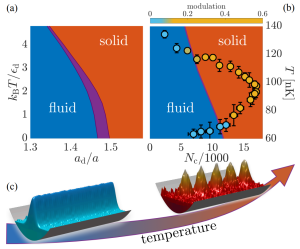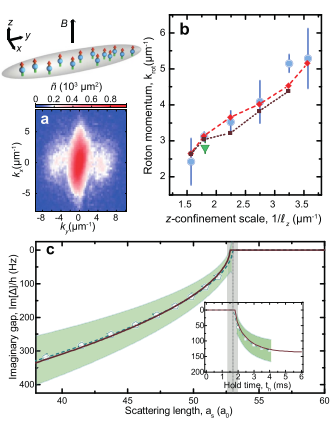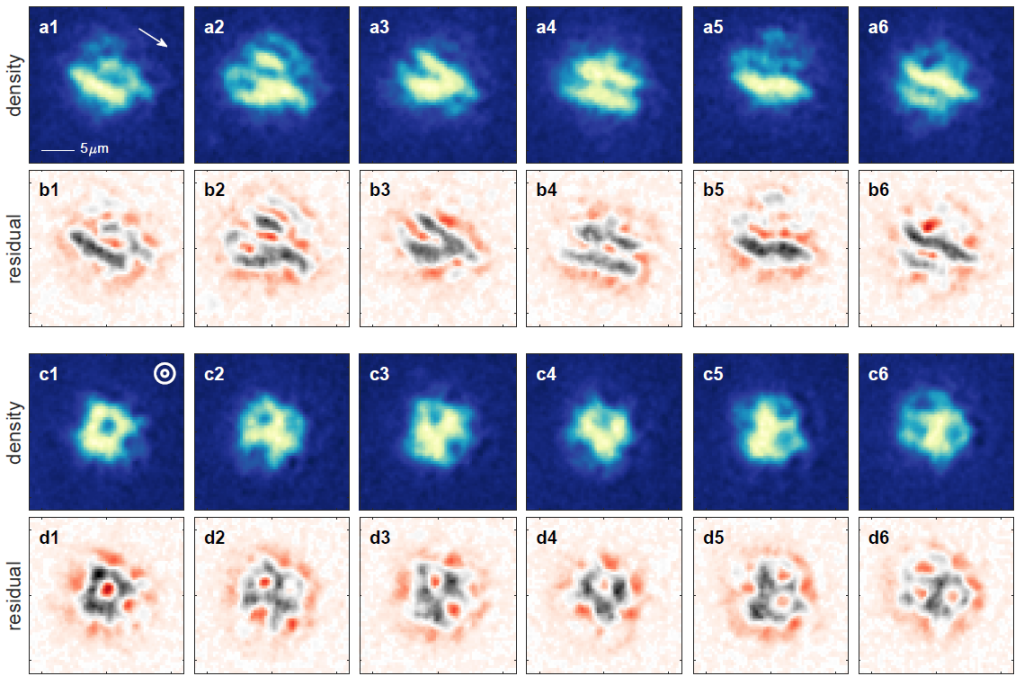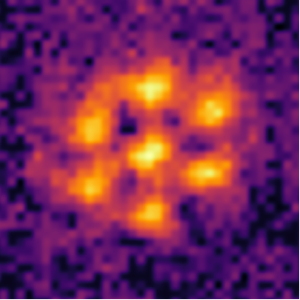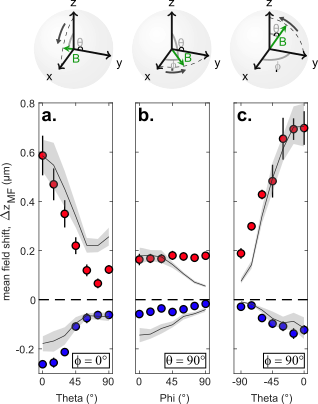Raising the temperature of a material enhances the thermal motion of particles. Such an increase in thermal energy commonly leads to the melting of a solid into a fluid and eventually vaporises the liquid into a gaseous phase of matter. Here, together with theorists from Aarhus, Denmark, we study the finite-temperature physics of dipolar quantum fluids and find surprising deviations from this general phenomenology. In particular, we describe how heating a dipolar superfluid from near-zero temperatures can induce a phase transition to a supersolid state with a broken translational symmetry. The predicted effect agrees with our experimental measurements from the Er-Dy, which opens the door for exploring the unusual thermodynamics of dipolar quantum fluids.
See the pre-print here: arXiv:2209.00335 and the published paper here: Nature Communications (2023)

